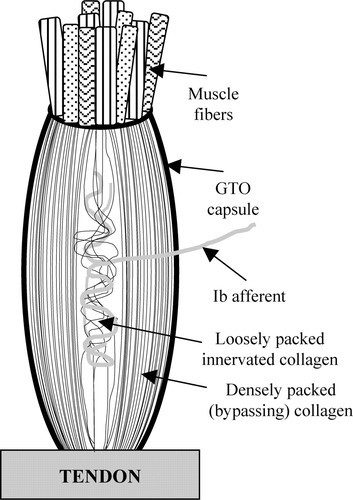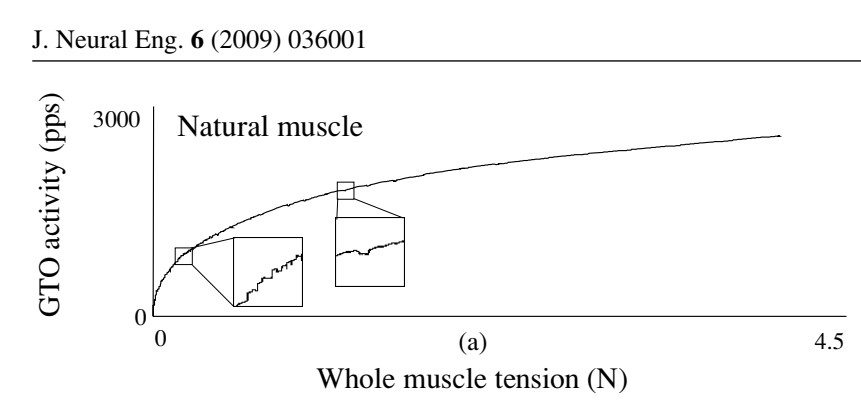Can we feel muscle activation?
The mind-muscle connection is a concept from bodybuilding circles that made it into exercise science. The mind-muscle connection refers to our ability to sense how well a muscle is being trained and our ability to selectively activate our target muscles during an exercise. The idea is that a good neural connection between your brain and a muscle allows you to feel how well you’re training that muscle and thereby adjust your program. For example, a bodybuilder may forsake an exercise because they can’t get a good mind-muscle connection and replace it with an exercise they feel more strongly in their target muscles. The mind-muscle connection is also purported to give us the ability to make our bodies preferentially recruit our target muscles. By focusing on the target muscles while you exercise, you can feel them more, and this is taken as a sign those muscles are activated more.
But are our feelings in line with the facts? Do our feelings of which muscles are active actually correspond to how much mechanical tension they experience and how well they’ll subsequently grow? In part 2 of this series, I’ll also go into whether we can we activate certain muscles more by focusing on them.
Feeling the muscle
Our bodies are equipped with the ability to sense mechanical tension, the primary stimulus for muscle growth. This sense falls under what scientists call proprioception: our sense of our own body position, movement and force production. Proprioception is why you can walk up stairs in pitch black darkness: you know what your legs are doing without seeing them. Proprioception is achieved by proprioceptors: sensors in our muscles and connective tissues that detect mechanical stimuli, such as muscle stretching and tension (‘mechanosensors’). The sense of muscle tension comes from our Golgi Tendon Organs (GTOs).

The Golgi Tendon Organ (GTO). GTOs are primarily located deep in our muscles, in between our tendons and our muscles. GTOs encapsulate bundles of muscle fibers and monitor how these fibers pull on the tendon. Source
While GTOs can sense active mechanical tension in our muscles very accurately, the signals that they send to the brain do not linearly correspond with the total tension the muscle experienced for multiple reasons [2]. It’s worth noting that most of our understanding of GTOs comes from mathematical modeling, in vitro research and animal research, but for basic physiology like this, these models are generally quite representative of living humans.
First, GTOs are very insensitive to passive muscle tension. They can detect it, but they only activate at very high levels of passive tension. GTOs may thus underestimate stretch-mediated hypertrophy, although the sensation of muscle stretch can be detected well by other sensors.
Second, not all muscle fibers are connected to GTOs. 95% of GTOs are connected to no more than 25 muscle fibers and most muscles have fewer than 100 GTOs. If we compare that to the 253.000 muscle fibers in a muscle like the biceps, that means fewer than 1% of muscle fibers are connected to a GTO. Also, these GTOs are located deeply within our muscles, where there are relatively more slow-twitch muscle fibers. However, it’s estimated that most motor units are strategically connected to at least 1 GTO. Since all muscle fibers in a motor unit should fire at the same time, total GTO activity probably represents total muscle tension reasonably well.
Reason 3: non-linear summation. The strength of the GTO signal to the brain is not linearly related to muscle tension. It’s more logarithmic, as you can see below. This means GTOs strongly distinguish between low and medium muscle tension, but they don’t distinguish as much between high and very high tension.

Reason 4: adaptation effects. GTOs respond not just to tension but also the time under this tension: GTOs habituate to constant tension. GTOs essentially somewhat ignore constant tension, whereas they respond very sharply to sudden increases active in tension. GTOs also desensitize after high tension. Therefore, GTOs respond better to changes in tension than absolute tension.
Reason 5: subconscious processing. Arguably the biggest problem of all, much of the GTO’s signal to the brain seems to be processed by the subconscious parts of our brain, like most motor functioning. GTO afferent feedback is processed mostly subconsciously, although it can reach the conscious parts of our cortex. Just think of how difficult it is to feel which muscles exactly we use when we throw a ball or throw a roundhouse kick, let alone to what degree those muscles are active.
The lack of conscious processing is particularly strong for sensations resulting from self-generated movement (‘reafferent signals’): our body predicts the results of our own movements and therefore does not respond to its resulting signals. This is why we cannot tickle ourselves: expected movements don’t generate nearly the same sensations as unexpected ones. The lack of processing of self-generated proprioceptive stimuli is also the reason for findings of force escalation. For example, imagine you put your hand on a table. Now somebody presses down on your hand and afterwards you have to apply that same amount of force on their hand on the table. Most people apply significantly more force on the other person’s hand, because they cannot feel as well how much force they’re applying themselves as they can feel from external sources. We’re blind towards the stimuli resulting from our own movements. Since practically all exercise is self-initiated movement, our brains do not consciously process a great deal of the internal signals resulting from exercise.
Perhaps the clearest example of proprioception gone wrong is phantom limb sensations. In some cases, we can experience sensations in a limb that doesn’t exist. For example, after a hand amputation, many people still feel things in the hand that’s no longer there. The brain clearly didn’t get the memo in these cases.
In conclusion, our bodies are biologically equipped to sense muscle tension, but the system is very imperfect for bodybuilding purposes. Turns out it was more important for humans to throw a spear accurately than to know how much this stimulated their biceps.
If you think about it, it’s obvious humans don’t have a ‘tension stat’ in their muscles. If we did, we wouldn’t need so much education about which exercises train which muscles. There are many debates online about which exercises train which muscles. Take pull-overs: do they train the pecs or the lats better? How about the long head of the triceps? One of the first questions PTs get from new clients is generally: “Which muscles does this exercise train?” And while we like to think we get better at this with experience, it’s hard to determine if we’re actually getting better or we just remember which muscles are supposed to be trained by an exercise. Are you ‘feeling’ your lower traps during a pulldown because you can sense the internal muscle tension or do you think you feel something there because you expect to feel something there? Analogously, we also like to think we get better with experience at estimating how close to failure we’re training, yet most research finds training experience and even experience with estimating reps to in reserve (RIR) not improve the accuracy of our RIR estimates.
We also generally can’t feel our smooth muscles contract, yet fortunately our heart and intestines are working around the clock to keep us alive.
Theory aside, what do the data say? We currently only have 1 study that directly associated subjective and objective muscle activity. Mitsuya et al. (2023) found that even bodybuilders could only accurately feel rectus femoris activity during leg extensions in one of 3 measurement sites. In the vastus lateralis and medialis, there was an increasing trend of subjectively perceived muscle activity with increasing hip flexion angles despite constant objective muscle activity. The bodybuilders thus had a limited ability to detect true differences in muscle activity while also being prone to experience differences in muscle activity that did not actually exist. The researchers concluded their “results suggested that […] the subjective sensation of muscle contraction […] was inconsistent with […] objective muscle activity.” And that’s the group average of highly experienced bodybuilders. At the individual level, the relationship between subjective and objective muscle activity becomes even more tenuous.
Clearly though, we feel something in our muscles when training. So what is that something if not muscle tension? Metabolic stress and stretch seem to be much easier to feel than muscle tension. There are many training practices which stimulate a great pump, burn or stretch in our muscles, enriching the mind-muscle connection, while not being particularly effective and sometimes even counterproductive for muscle growth.
- You can get a great pump and mind-muscle connection by performing mid-range partial reps for a muscle, yet full ROM training is generally superior to stimulate muscle growth.
- Using short rest intervals similarly increases the pump and burn you get from training, but short rest periods actually reduce muscle growth in research.
- Pre-exhausting the pecs with the pec deck before doing chest presses doesn’t increase pec muscle activity, but you’ll probably feel your pecs more during the subsequent bench press.
- Blood flow restriction training also majorly amplifies how much you feel the occluded limb, but counterintuitively, muscle activity levels and muscle growth increase just as much in the non-occluded agonists [2].
- Most people feel much more in their muscles when doing higher-rep sets than lower-rep sets. What they feel is metabolic stress, not muscle activity. Muscle activity and tension are of course higher during high-intensity than low-intensity exercise.
We’re also prone to mistaking stretching for mechanical tension. For example, most people feel a stiff-legged deadlift much better in their hamstrings than a regular deadlift even without any added weight. What you feel is the hamstrings running into passive insufficiency. Passive insufficiency means there is major muscle stretching but actually very low capacity to produce active tension. Research shows muscle activity levels do not significantly differ between stiff-legged and conventional deadlifts.
In contrast, we often don’t feel muscles that in fact are clearly highly active. For example, many people think they have gluteal amnesia: their glutes supposedly aren’t firing. If you think you have gluteal amnesia, ask yourself: how can I squat? The glutes are the primary, almost exclusive, hip extensor during squats. Clearly, something’s producing a high hip extension torque. Squats consistently produce very high muscle activity and muscle growth in research. You’re just not feeling the glutes. Many men in particular don’t feel their glutes during squats in my experience.
Moreover, many people do glute activation drills in their warm-ups to solve this supposed gluteal amnesia. These glute activation drills make some people feel their glutes more, but the science is clear that glute activation drills do not increase actual glute activity, force production or strength development over time.
Conclusion
There is no evidence that humans can accurately sense mechanical muscle tension. It’s questionable if humans are biologically equipped to accurately sense mechanical tension or muscle activity in the first place. The existing research suggests subjective and objective muscle activation don’t consistently align and there are clearly many cases where how much we feel a muscle does not correspond with muscle activity or tension. Some people feel a lot in their muscles when training, whereas others barely feel anything in their muscles, especially at low reps when muscle tension is actually highest. I think we should be cautious of relying heavily on these feelings and rather rely on scientific research findings and biomechanics to select exercises and design our training programs. Facts over feelings.
 Want more content like this?
Want more content like this?
Then get our free mini-course on muscle building, fat loss and strength.
By filling in your details you consent with our privacy policy and the way we handle your personal data.
